
Two Sand Creek Intermediate classrooms will be solar powered soon, thanks to the 6th grade STEM classes of Jennifer Suskovich. HSE21 Shorts asked Mrs. Suskovich about the project’s origins, and about what her students are learning in the process. (Process – hmmm…that word sounds familiar from our last post…)
Q: This is a huge undertaking. What gave you the initial idea?
A: I moved to a new classroom this school year, and wanted to utilize an area outside of school for an outdoor learning space. I had the class brainstorm some ideas we could explore out there. A student mentioned using the space to gather solar energy. The students agreed that this would be an interesting activity that they hadn’t really explored before. Coincidentally, I had spent a day this summer at the Purdue SLED training and one of the training topics was building a solar tracker prototype. I began writing the grants to purchase solar panels with light kits and solar generators in September. By the beginning of February, I had all of the light kits purchased for two classes. We are waiting to have them installed by an electrician.
Q: So, how does this relate to STEM (science, technology, engineering, and math) Academic Standards for 6th graders?
 A: This project will challenge students to use their science based knowledge on the daily/seasonal solar movements to find the ideal location to place solar panels and increase the amount of time our class is powered by solar energy. Technology will be utilized to run the system that tracks the sun throughout the day. Students will use the engineering design process to work collaboratively to create solar tracking prototypes, test, and redesign their systems. Students will use their mathematical knowledge to analyze data and decide on the angle the solar panels should be placed throughout the day to receive the maximum amount of sunlight. Finally, students will collaborate with the art department to ensure that the designs for the solar panel tracking systems are aesthetically pleasing on our school grounds.
A: This project will challenge students to use their science based knowledge on the daily/seasonal solar movements to find the ideal location to place solar panels and increase the amount of time our class is powered by solar energy. Technology will be utilized to run the system that tracks the sun throughout the day. Students will use the engineering design process to work collaboratively to create solar tracking prototypes, test, and redesign their systems. Students will use their mathematical knowledge to analyze data and decide on the angle the solar panels should be placed throughout the day to receive the maximum amount of sunlight. Finally, students will collaborate with the art department to ensure that the designs for the solar panel tracking systems are aesthetically pleasing on our school grounds.
Q: What happens next – after the electrician installs the light kits?
A: Once the panels are installed, the project will be broken down into the following phases:
Phase 1 Focus Question: How does the sun move both daily and seasonally?
Students will collect data on where to place solar panels to receive the maximum amount of daily solar energy. Students will graph this data and analyze the daily, weekly and monthly movements and energy collection to determine the optimum angles for the solar panel
Phase 2 Focus Question: How can we build a device that moves with the sun to maximize the amount of time our class is powered by solar energy vs. electricity?
Students will create small solar tracking prototypes. The prototypes must be capable of the movements necessary for tracking daily and seasonal solar actions. Students will then evaluate competing design solutions using a systematic process to identify how well they meet the criteria and constraints of the problem. The class will identify the best characteristics of each design that can be combined into a new solution to better meet the criteria for success.
Phase 3 Focus Question: How can our solar tracking device move on its own?
Students will explore various systems to decide if our solar trackers should move with motors, computers, hydraulics, etc. Our class has contacted Taylor University to discuss features of their Heliostat Atrium and how the drive system aligns the circular mirror to track the sun. We have also contacted The Indianapolis International Airport Solar Farm and the IMPA Richmond Solar Power Park for research and informational purposes. The classes will build and test designs to determine which tracking system gathers the maximum amount of solar energy while meeting the constraints of money and technology.
 Phase 4 Focus Question: How can we make our solar tracking devices aesthetically pleasing on our school grounds?
Phase 4 Focus Question: How can we make our solar tracking devices aesthetically pleasing on our school grounds?
The panels will be facing the main road in front of our school building. Students will be working with the art teachers to transform the designs into interesting and creative art pieces while keeping the integrity and function of the solar tracking systems.
 Clyde Cothern was born in 1922, when Cerebral Palsy was not yet medically understood. Ben Mikaelsen’s novel, Petey, is based on Clyde’s (aka, Petey Corbin’s) life, decades of which were spent in what in the 1920s was known as an ‘asylum’. Largely abandoned and without therapy, Clyde (Petey) remained locked inside his body for years – unable to communicate. Thankfully, Petey rises above his circumstances – the novel is a story of hope. It’s also a novel that’s hard to forget.
Clyde Cothern was born in 1922, when Cerebral Palsy was not yet medically understood. Ben Mikaelsen’s novel, Petey, is based on Clyde’s (aka, Petey Corbin’s) life, decades of which were spent in what in the 1920s was known as an ‘asylum’. Largely abandoned and without therapy, Clyde (Petey) remained locked inside his body for years – unable to communicate. Thankfully, Petey rises above his circumstances – the novel is a story of hope. It’s also a novel that’s hard to forget.
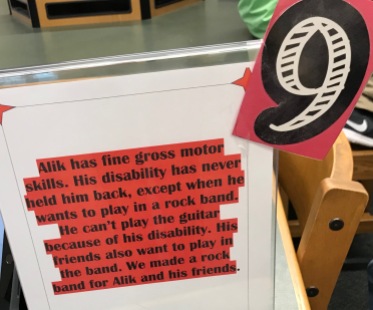

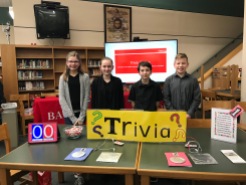





 Walk into a traditional elementary school in the U.S.A. and you’ll likely encounter a 1st grade hall, a 2nd grade hall, a 3rd grade hall…you get the idea. Students sorted by grades and, it follows, by age. But why? Historically, were grade level corridors more efficient? Was there a research base that testified to the validity of this model? Or has an American educational system handed this structure down, merely because “this is the way we’ve always done things”?
Walk into a traditional elementary school in the U.S.A. and you’ll likely encounter a 1st grade hall, a 2nd grade hall, a 3rd grade hall…you get the idea. Students sorted by grades and, it follows, by age. But why? Historically, were grade level corridors more efficient? Was there a research base that testified to the validity of this model? Or has an American educational system handed this structure down, merely because “this is the way we’ve always done things”? envisioned?
envisioned?
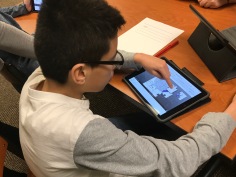 Some LifeSkills students at Riverside Junior High have had the opportunity recently to enjoy a new digital challenge, thanks to teacher McKenzie Davis. Modeled after the popular learning game platform,
Some LifeSkills students at Riverside Junior High have had the opportunity recently to enjoy a new digital challenge, thanks to teacher McKenzie Davis. Modeled after the popular learning game platform,  The Breakout challenge was composed of four puzzles – solving each puzzle resulted in a clue needed to ‘breakout’. For example, typing in the first puzzle’s correct answer, Paul Revere, released the second puzzle, a jigsaw puzzle of the 13 colonies. In this puzzle, the students completed a crossword and unscrambled the circled letters, revealing the last challenge step – a math equation to solve. The students ‘broke out’ when they correctly answered the math problem.
The Breakout challenge was composed of four puzzles – solving each puzzle resulted in a clue needed to ‘breakout’. For example, typing in the first puzzle’s correct answer, Paul Revere, released the second puzzle, a jigsaw puzzle of the 13 colonies. In this puzzle, the students completed a crossword and unscrambled the circled letters, revealing the last challenge step – a math equation to solve. The students ‘broke out’ when they correctly answered the math problem. Said Mrs. Davis, “I created my digital breakout to show that technology is universal and can be used for anyone no matter their ability. Technology can be modified and adapted for everyone! Our students responded well to and were very engaged with the IPAD, as compared to traditional paper worksheets.”
Said Mrs. Davis, “I created my digital breakout to show that technology is universal and can be used for anyone no matter their ability. Technology can be modified and adapted for everyone! Our students responded well to and were very engaged with the IPAD, as compared to traditional paper worksheets.”

 A: This project will challenge students to use their science based knowledge on the daily/seasonal solar movements to find the ideal location to place solar panels and increase the amount of time our class is powered by solar energy. Technology will be utilized to run the system that tracks the sun throughout the day. Students will use the engineering design process to work collaboratively to create solar tracking prototypes, test, and redesign their systems. Students will use their mathematical knowledge to analyze data and decide on the angle the solar panels should be placed throughout the day to receive the maximum amount of sunlight. Finally, students will collaborate with the art department to ensure that the designs for the solar panel tracking systems are aesthetically pleasing on our school grounds.
A: This project will challenge students to use their science based knowledge on the daily/seasonal solar movements to find the ideal location to place solar panels and increase the amount of time our class is powered by solar energy. Technology will be utilized to run the system that tracks the sun throughout the day. Students will use the engineering design process to work collaboratively to create solar tracking prototypes, test, and redesign their systems. Students will use their mathematical knowledge to analyze data and decide on the angle the solar panels should be placed throughout the day to receive the maximum amount of sunlight. Finally, students will collaborate with the art department to ensure that the designs for the solar panel tracking systems are aesthetically pleasing on our school grounds. Phase 4 Focus Question
Phase 4 Focus Question
 Focusing on process meant defining an end goal – What type of show did the students want to create? – and then naming the steps it would take to get there. Mrs. P.’s class viewed other student broadcasts and identified the features which made some excellent but some only so-so. The students produced group norms for their endeavor. They learned how professionals tackle the process from HSE’s director of School and Community Relations, Emily Pace-Abbotts, who stopped by to share her experiences reporting for a local TV news channel.
Focusing on process meant defining an end goal – What type of show did the students want to create? – and then naming the steps it would take to get there. Mrs. P.’s class viewed other student broadcasts and identified the features which made some excellent but some only so-so. The students produced group norms for their endeavor. They learned how professionals tackle the process from HSE’s director of School and Community Relations, Emily Pace-Abbotts, who stopped by to share her experiences reporting for a local TV news channel. With goals in place to anchor their decisions, and background for the task ahead, the class brainstormed story ideas and narrowed the field. Student groups wrote, filmed, and edited their news stories. Mrs. Kussy led students through the actual filming and editing process. By Friday afternoon (yes, this took place in one week!), the show was ready to air.
With goals in place to anchor their decisions, and background for the task ahead, the class brainstormed story ideas and narrowed the field. Student groups wrote, filmed, and edited their news stories. Mrs. Kussy led students through the actual filming and editing process. By Friday afternoon (yes, this took place in one week!), the show was ready to air.











 Media Specialist John Hochstetler has implemented the
Media Specialist John Hochstetler has implemented the 






 At HSE Schools, we are sometimes asked how it’s possible to embed ‘soft skills’ (aka,
At HSE Schools, we are sometimes asked how it’s possible to embed ‘soft skills’ (aka, 

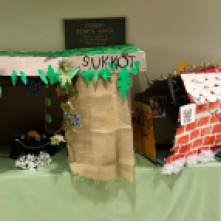







 A Long Walk to Water by Linda Sue Park, a Global Read Aloud selection for 2017, was chosen for our book study. It was the perfect fit for our students, as it is accessible to all four of our 5-8 grade levels. A Long Walk to Water would provide a forum through which to address our Diversity Committee goals of global thinking/awareness and empathy-building. The book also lended itself to other HSE21 learning goals such as collaboration and inquiry.
A Long Walk to Water by Linda Sue Park, a Global Read Aloud selection for 2017, was chosen for our book study. It was the perfect fit for our students, as it is accessible to all four of our 5-8 grade levels. A Long Walk to Water would provide a forum through which to address our Diversity Committee goals of global thinking/awareness and empathy-building. The book also lended itself to other HSE21 learning goals such as collaboration and inquiry.
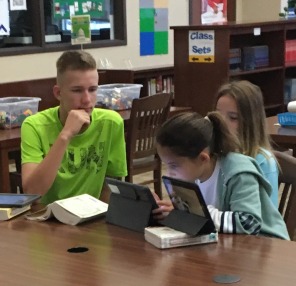 Students are our future leaders, and what better way to show them that by offering them chances to BE leaders now. This year my eighth graders were challenged to write an “About Me” paragraph — something that, by eighth grade, they have done several times. The difference? This paragraph could not include their name. In these “About Me” paragraphs, the eighth graders’ aim was showcase their best qualities in an effort to appeal to a 5th/6th grade audience. Without knowing names, the younger students read and selected buddies based solely on the power of the 8th graders’ writing.
Students are our future leaders, and what better way to show them that by offering them chances to BE leaders now. This year my eighth graders were challenged to write an “About Me” paragraph — something that, by eighth grade, they have done several times. The difference? This paragraph could not include their name. In these “About Me” paragraphs, the eighth graders’ aim was showcase their best qualities in an effort to appeal to a 5th/6th grade audience. Without knowing names, the younger students read and selected buddies based solely on the power of the 8th graders’ writing.  After connecting with their buddies in the library, students were asked to discuss what they like to read and select a book that would inspire all members of the partnership. Students set reading goals, exchanged e-mail communication, and discussed characterization and plot development as they worked their way through the novel. Eighth graders walked in to every meeting with a plan, and they were met with thoughtful and engaging questions from their buddies.
After connecting with their buddies in the library, students were asked to discuss what they like to read and select a book that would inspire all members of the partnership. Students set reading goals, exchanged e-mail communication, and discussed characterization and plot development as they worked their way through the novel. Eighth graders walked in to every meeting with a plan, and they were met with thoughtful and engaging questions from their buddies.

